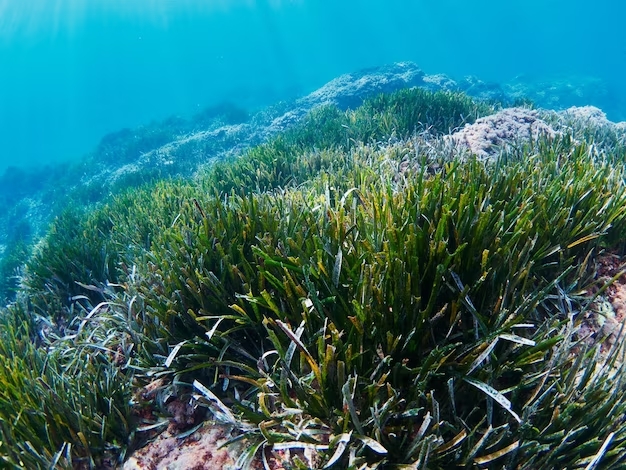What is marine posidonia?
Marine posidonia (posidonia oceanic) is an aquatic plant that grows in the underwater meadows of the mediterranean sea. Often confused with seaweed, posidonia is in fact a marine phanerogam, which means that it has flowers, fruits and roots, similar to terrestrial plants. This plant forms extensive underwater meadows that are essential to the health of the marine ecosystem.
Why is it good for beaches?
Coastal protection:
- Wave cushioning: Posidonia meadows act as natural barriers that cushion the impact of aves, protecting beaches from erosion. This is especially important during storms, when waves can cause severe damage to the coast.
- Sediment stabilisation: the roots and rhizomes of posidonia help to hold the sediment in place, preventing the loss of sand and other beach-forming materials.
Ecosystem and biodiversity:
- Habitat: posidonia meadows provide a vital habitat for a wide variety of marine species, including fish, molluscs and crustaceans. This biodiversity is not only important for the ecological balance, but is also an attraction for diving and snorkelling tourism.
- Oxygen production: through photosynthesis, Posidonia releases large quantities of oxygen into the water, improving water quality and benefiting all forms of marine life.
Nutrient cycling:
- Recycling of organic matter: dead posidonia leaves, often found on the beach, decompose and recycle vital nutrients that enrich marine sediments.
Why should it not be removed from beaches?
Impact on coastal erosion:
- Removal of posidonia debris can accelerate beach erosion. Leaves accumulated on the shore help to capture and retain sand, forming a natural barrier that protects the coastline.
Ecosystem and habitat:
- Posidonia debris on the beach provides shelter and food for many small species, including birds and small invertebrates. Removing this debris can disrupt these crucial microhabitats.
Environmental and economic costs:
- Posidonia removal has not only direct economic costs (labour and machinery), but also indirect environmental costs, such as transport and deposition of the remains. In addition, accelerated erosion can lead to significant expenditure on beach restoration efforts.
Posidonia is an invaluable resource that goes far beyond its appearance on the coast. Its ecological benefits, its role in coastal protection and its contribution to marine biodiversity are incalculable. Maintaining posidonia on Dénia‘s beaches not only helps to preserve these benefits, but also ensures a healthy and sustainable coastal environment for future generations.
For all these reasons, on 15th May 2024 the Resolution of the General Director of Natural and Animal Environment has been published, approving the Manual of good practices on the removal of posidonia and seba remains. The approval of this manual is intended to comply with the fifth final provision of Decree 64/2022, of 20 May, of the Consell, for the conservation of seagrass meadows in the Comunitat Valenciana. To consult how it affects Dénia’s beaches, please click on the following link.

